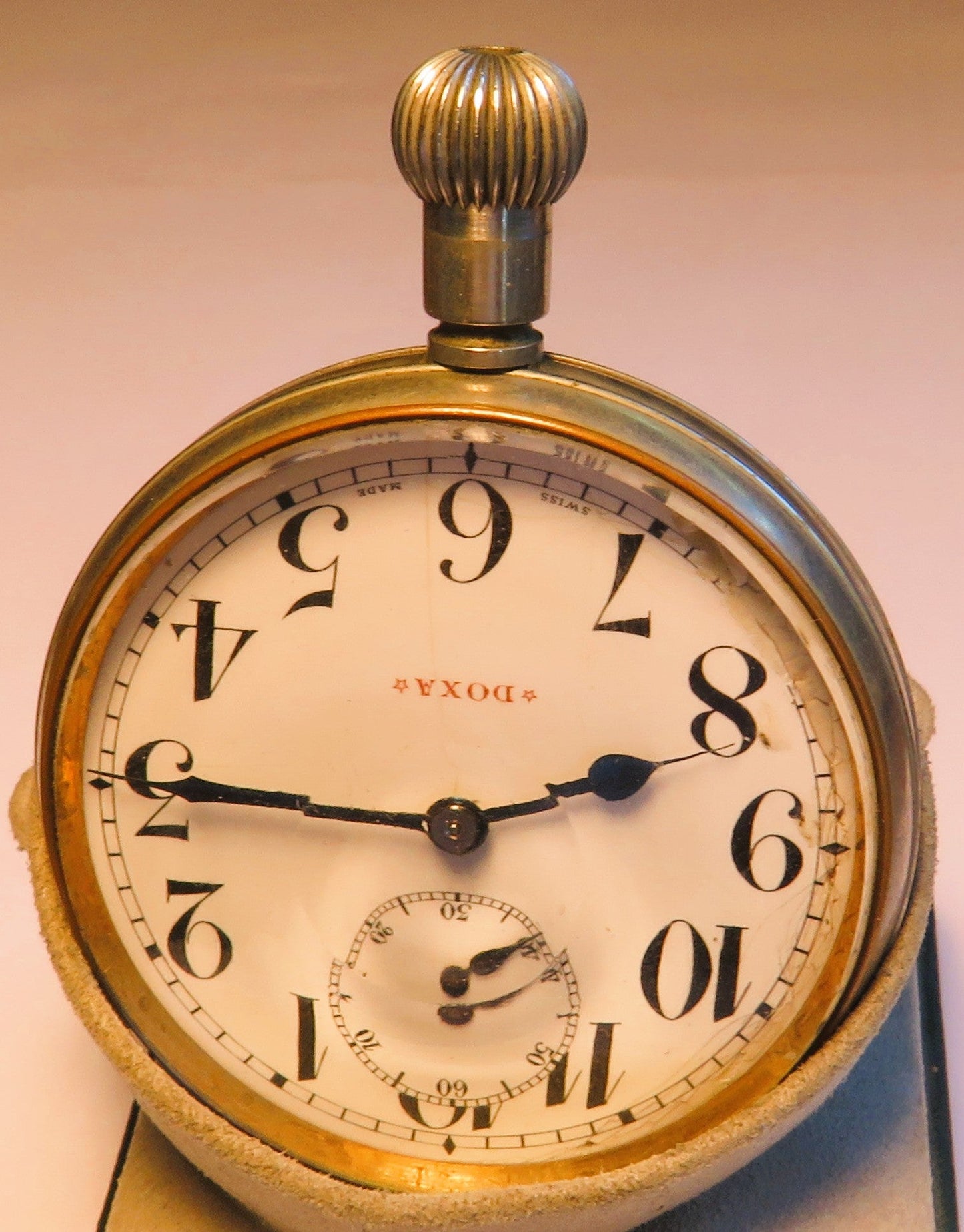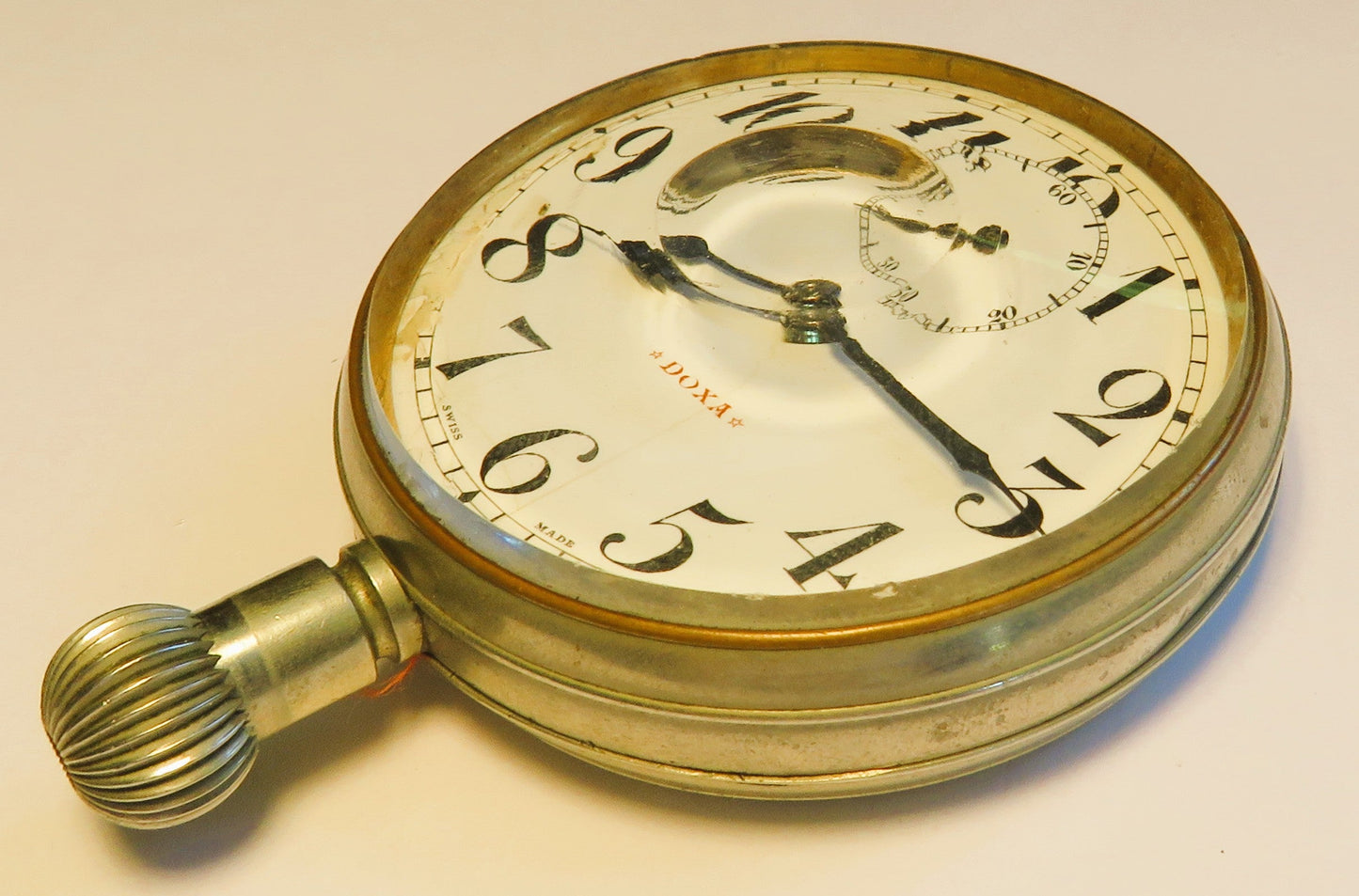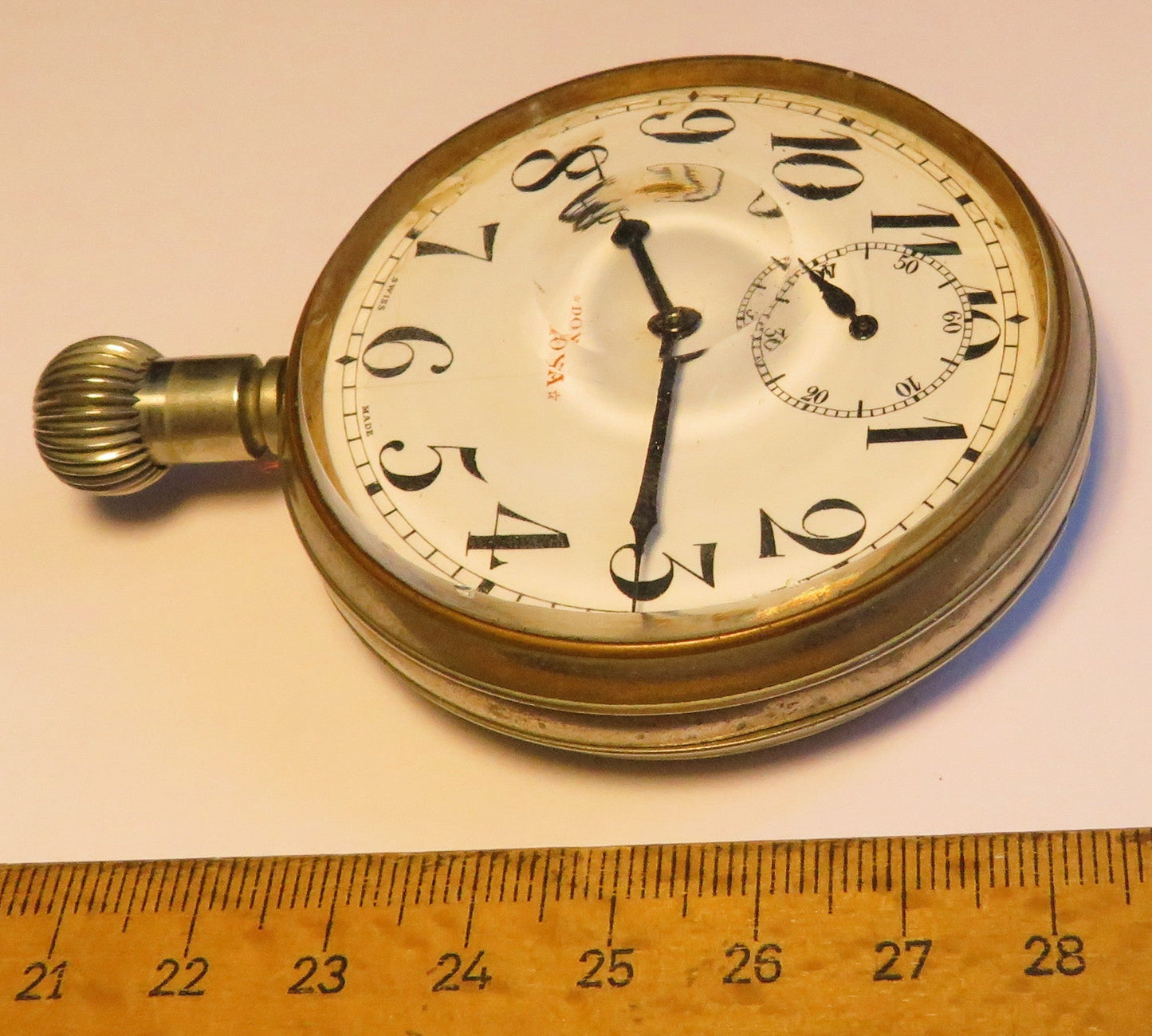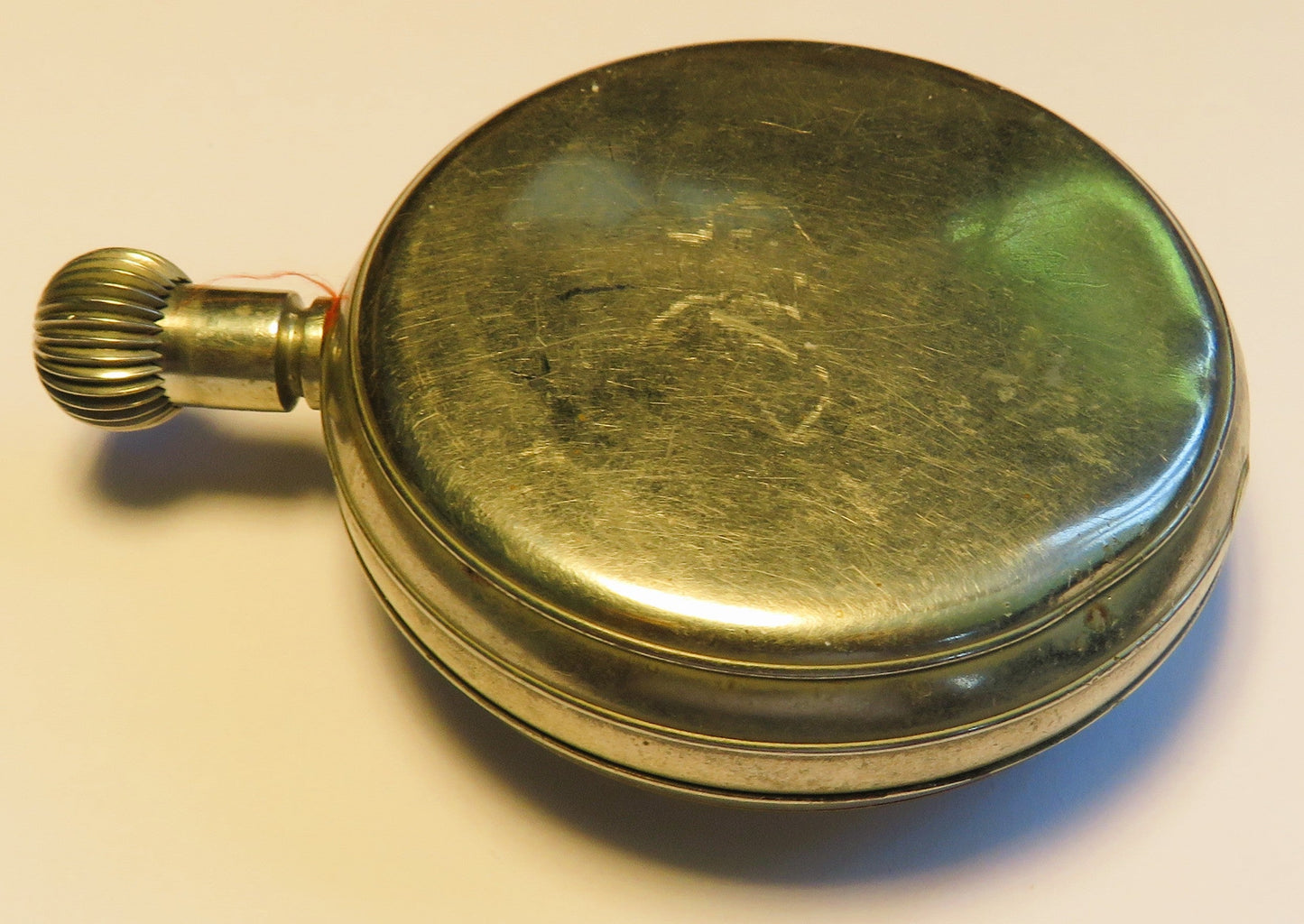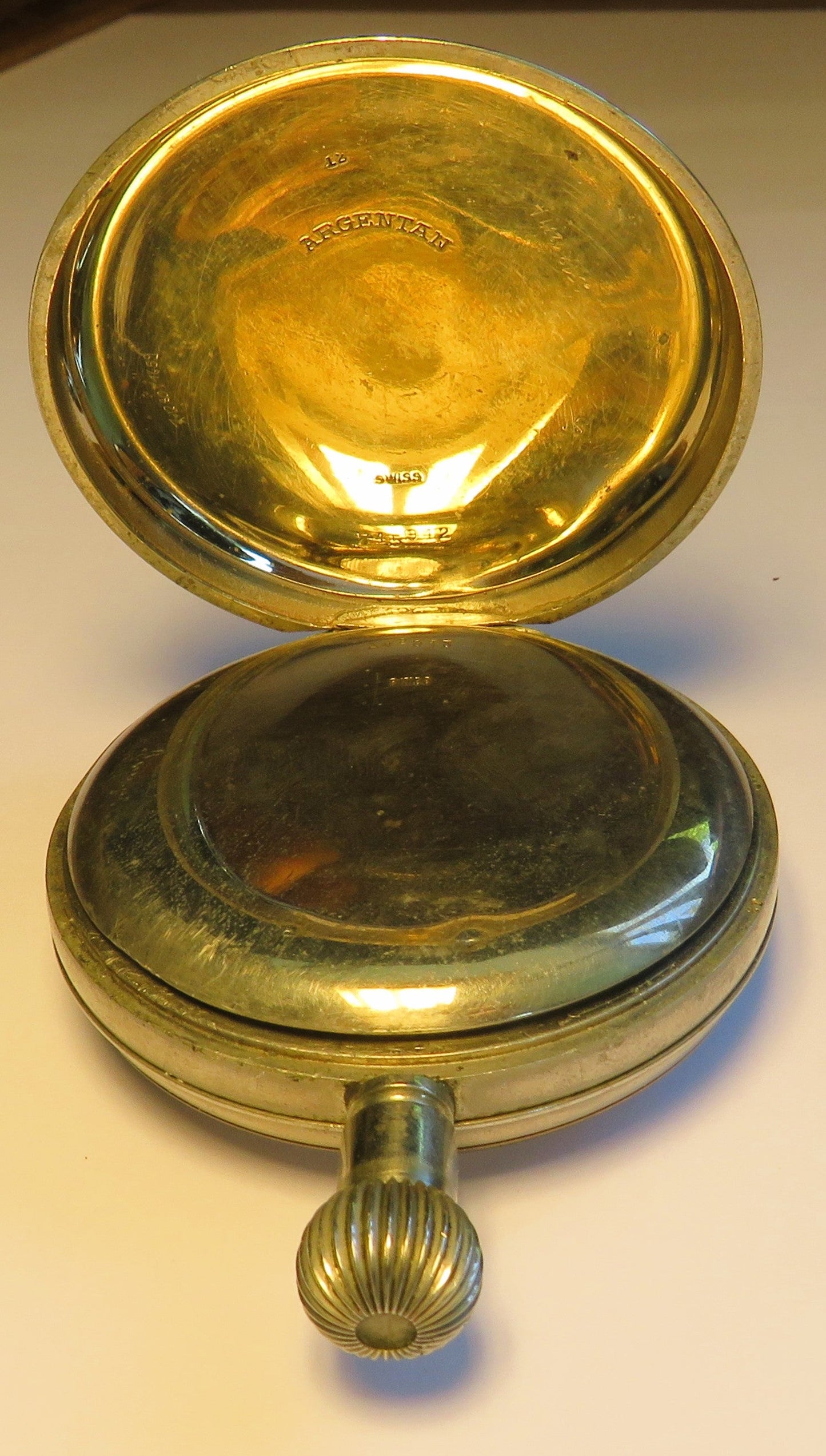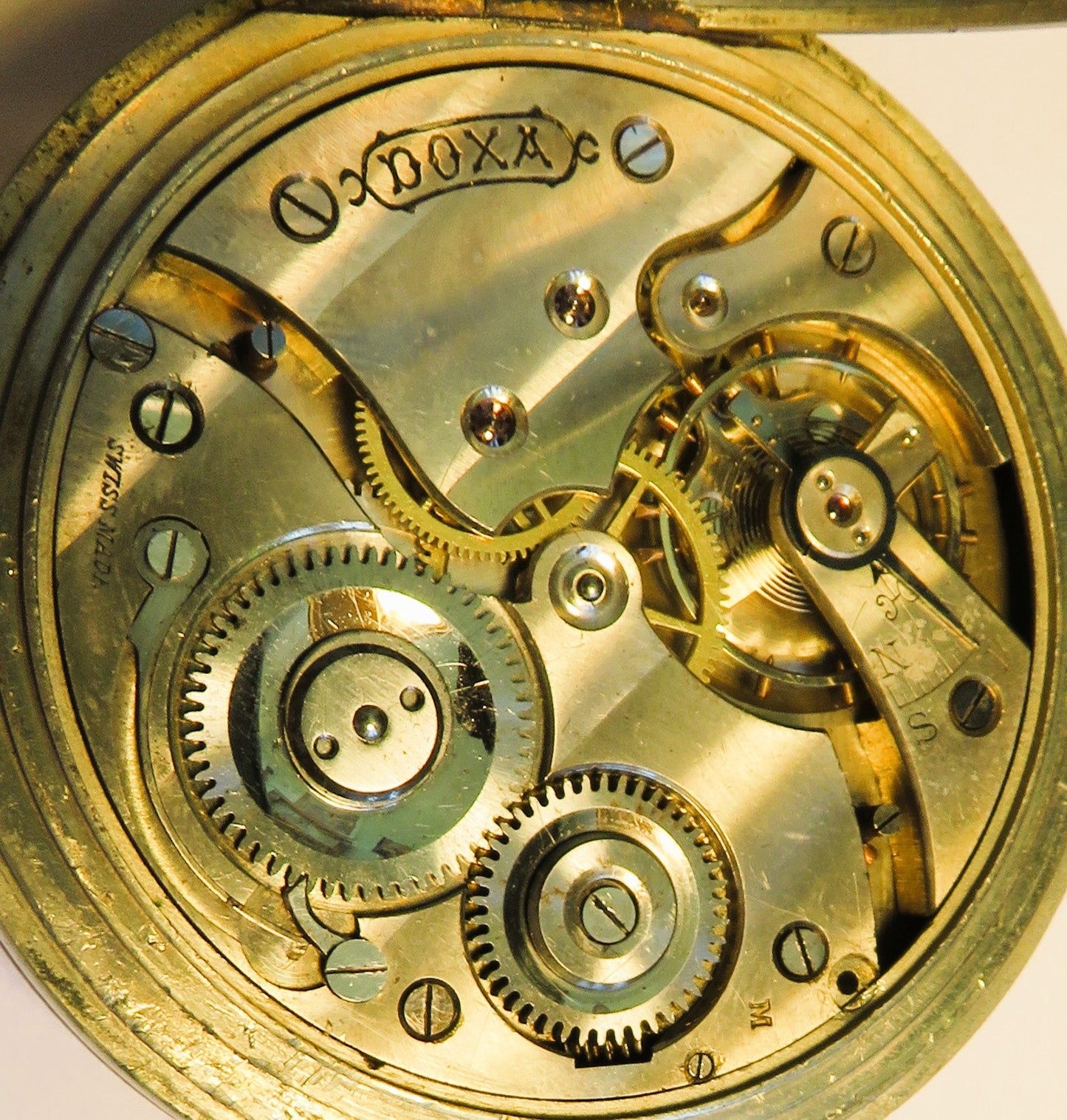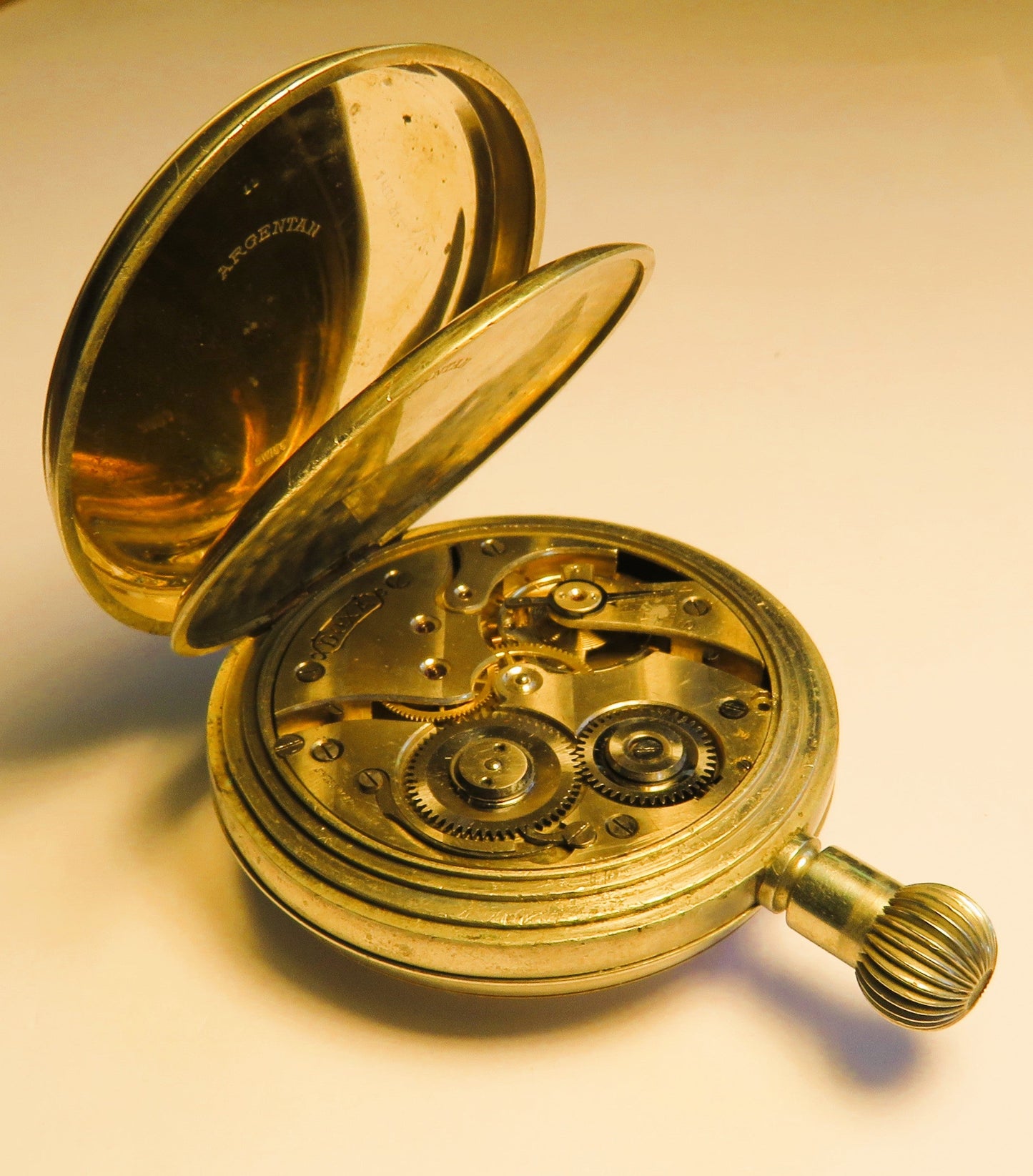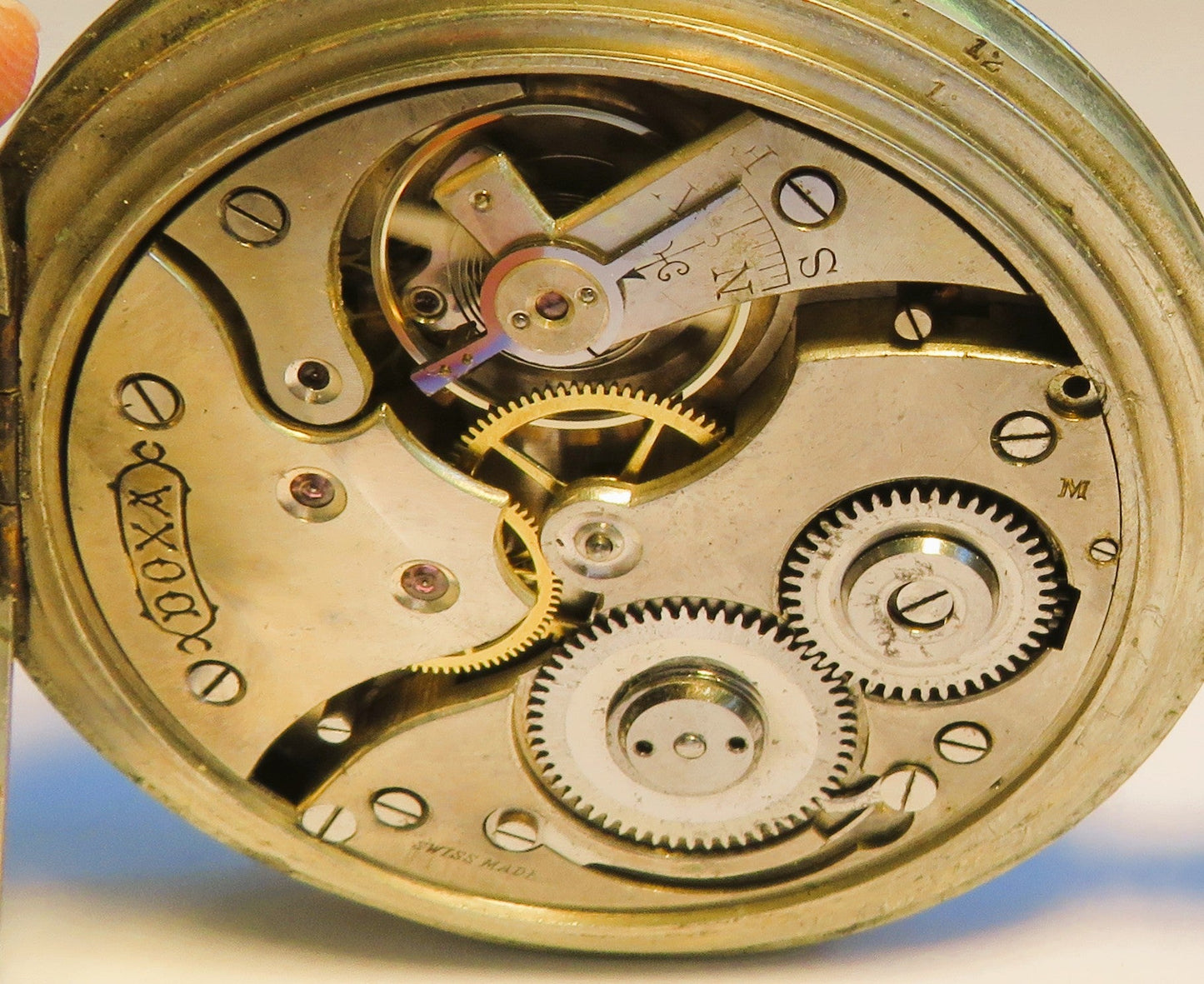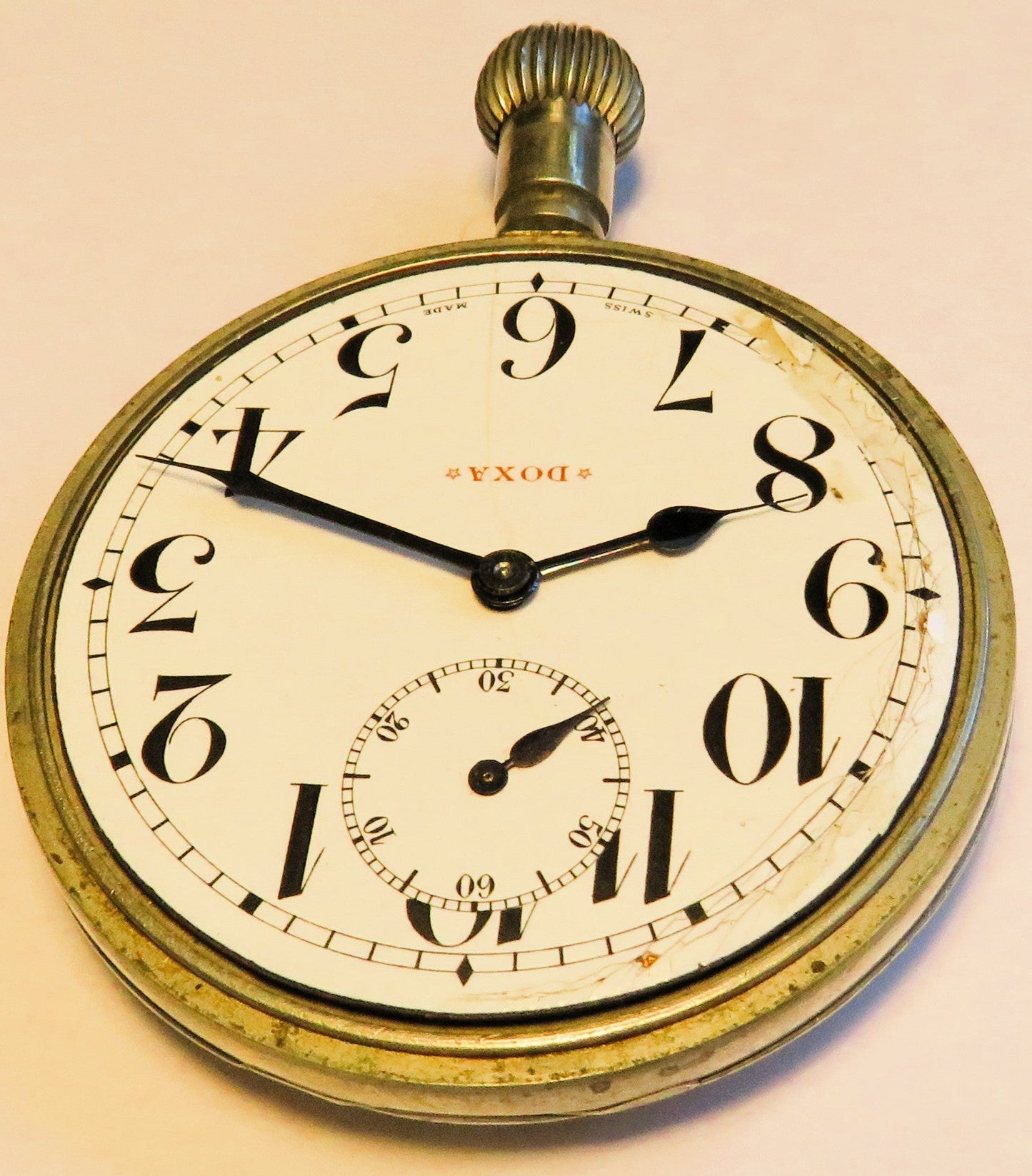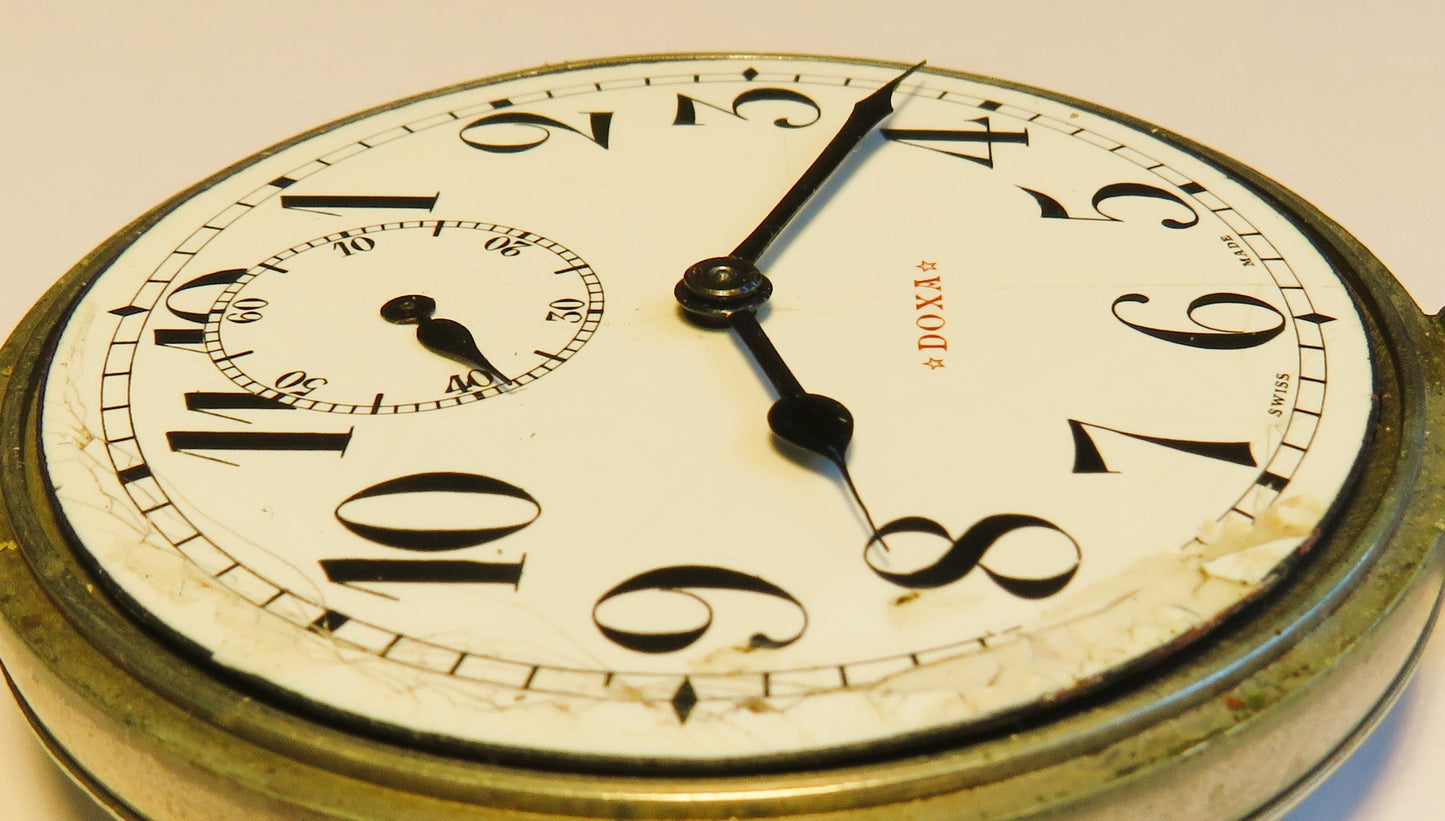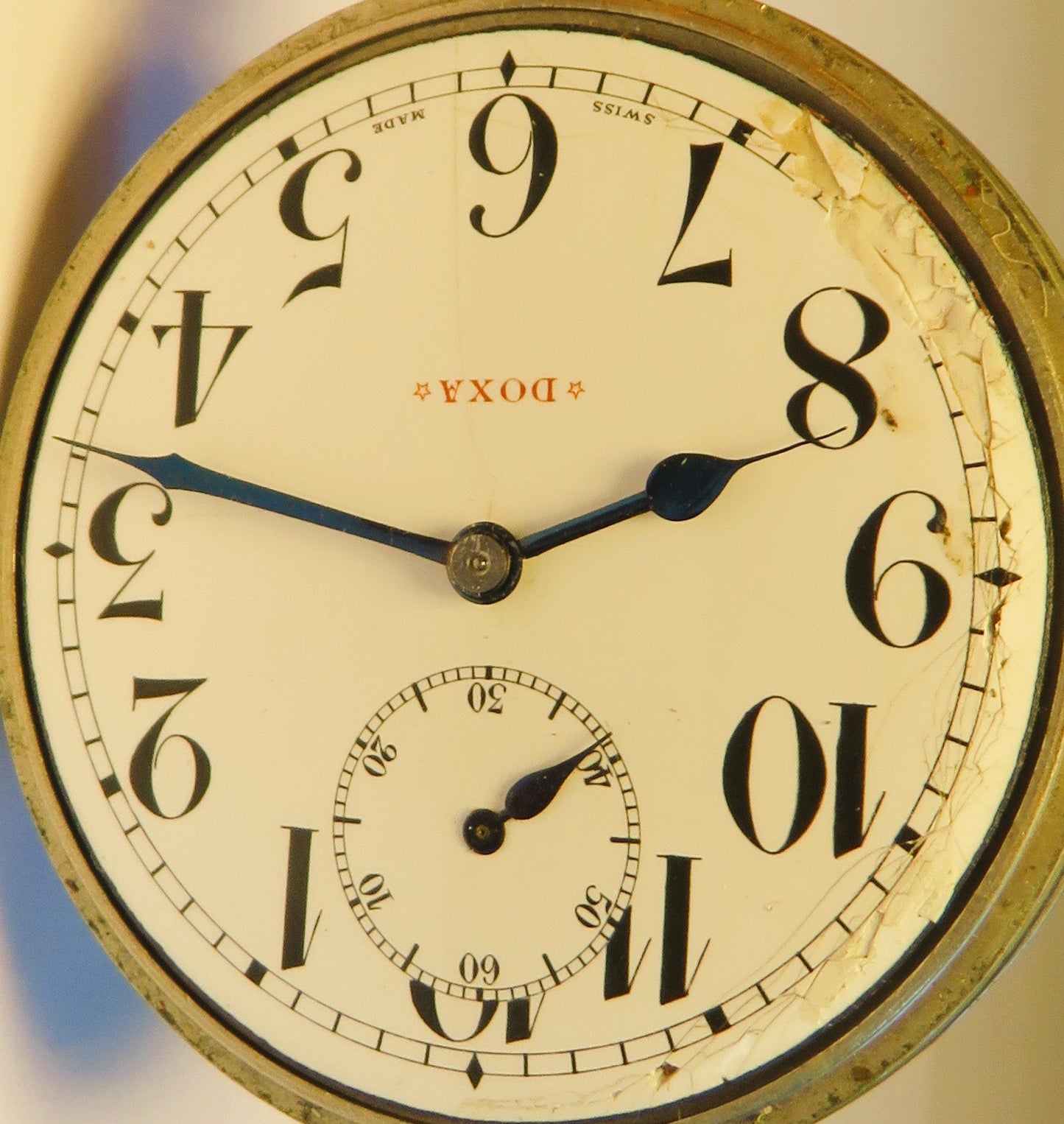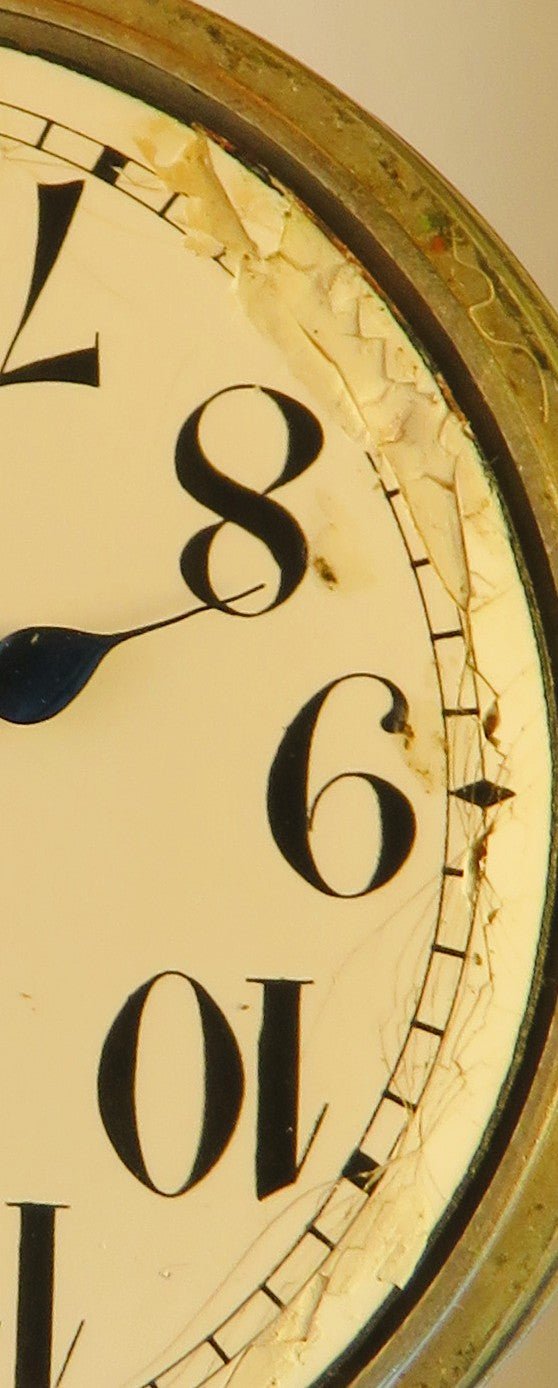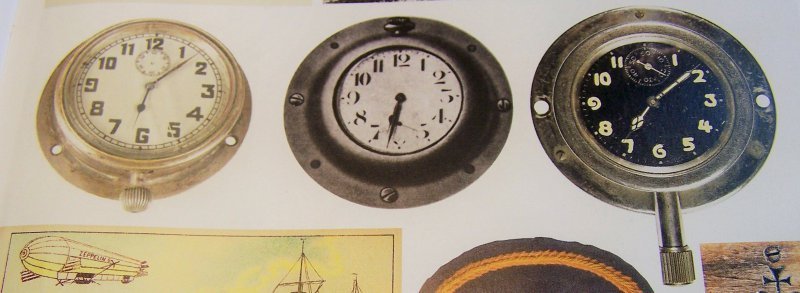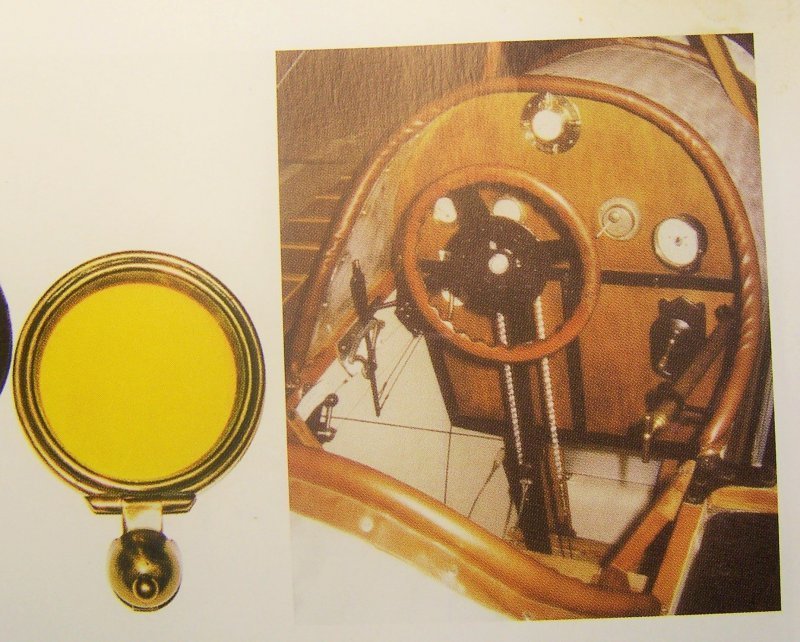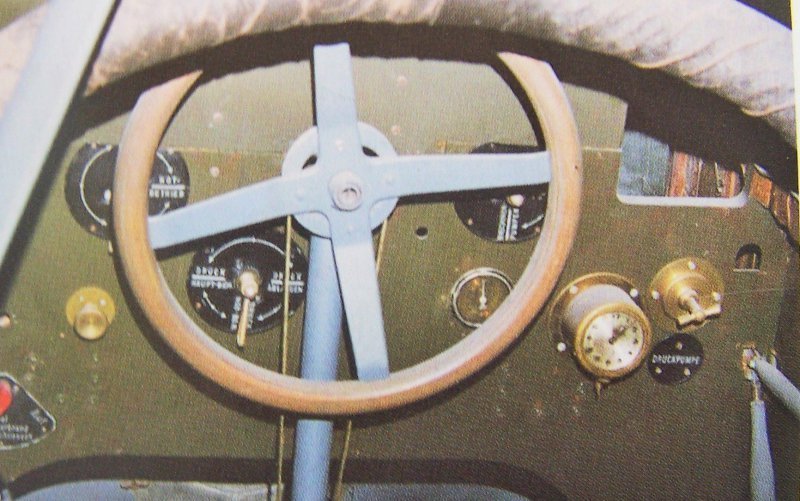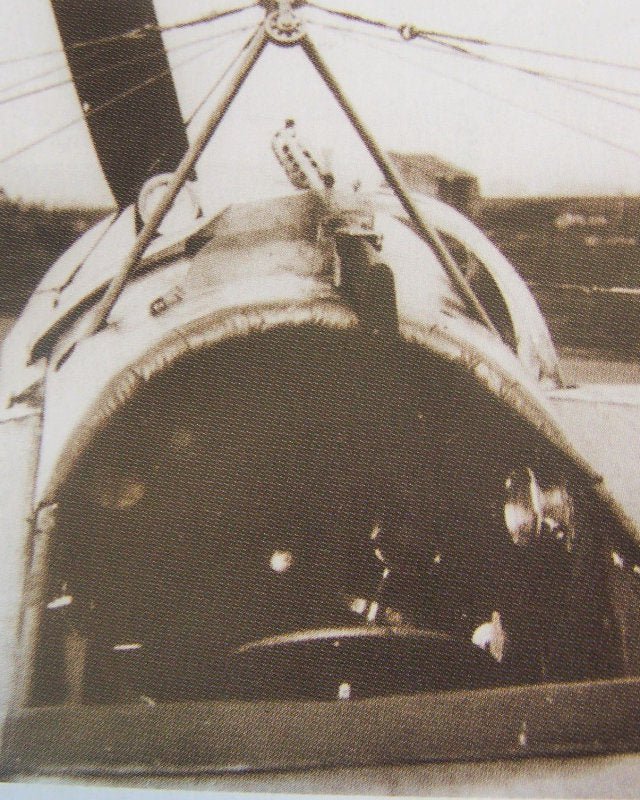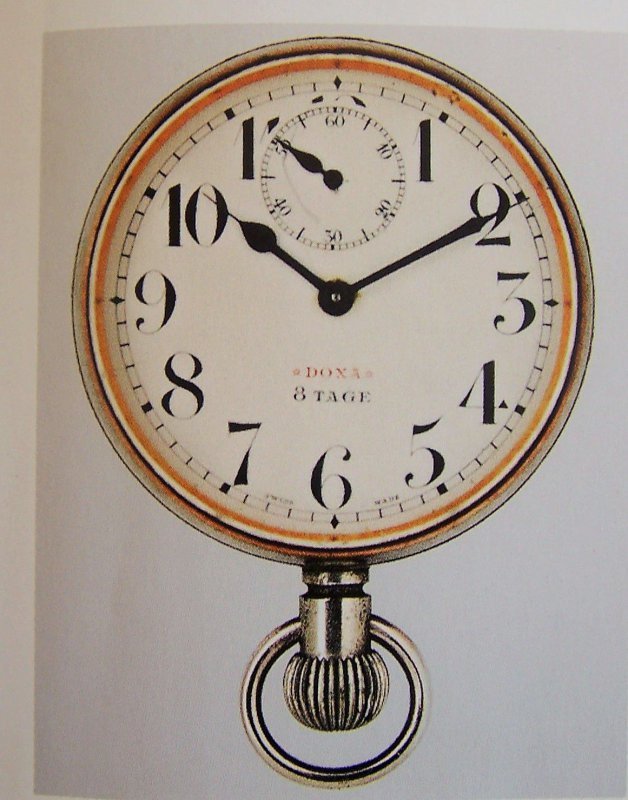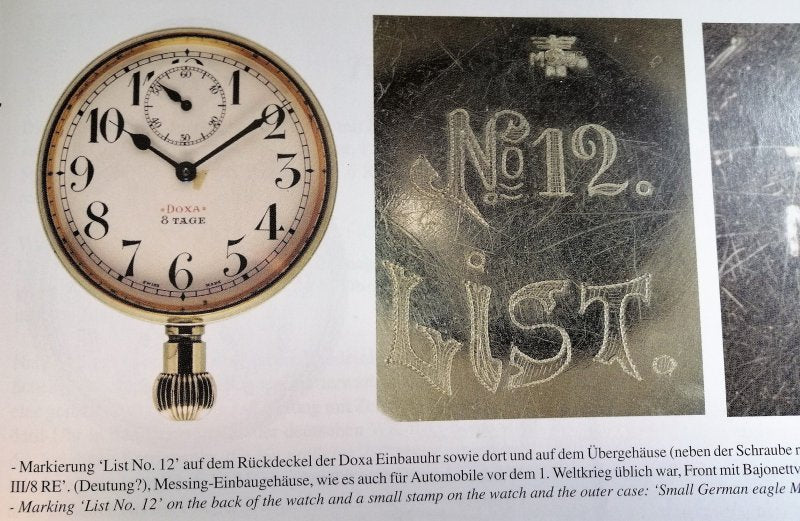Sammler-Uhren
Orig. Doxa on-board clock Zeppelin airship Imperial Air Force JASTA WW1
Orig. Doxa on-board clock Zeppelin airship Imperial Air Force JASTA WW1
Couldn't load pickup availability
Original early, very rare original Argentan Doxa on-board clock / pilot's watch of the Imperial Air Force of World War I around the legendary Jasta flying aces Baron von Richthofen and Ernst Udet
This unique piece of military watch history could have been used in a fighter plane or a Zeppelin, but this cannot be clarified anymore. However, the missing "FLZ" signature on the bottom makes it more likely that it was used in a Zeppelin.
Of course, these or similar Doxa clocks with brackets were also installed as so-called "car clocks" in early trucks
There are two compelling reasons why – in our humble expert opinion – it is 99% certain that this is an authentic example of the Imperial Air Force of World War I and that this unique piece of (military) watch history was used in a biplane fighter aircraft or zeppelin during World War I:
1. The typical turned dial for the aircraft cockpits of the early fighter pilots, described by Konrad Knirim and shown in several pictures
2. See photos below, so-called "car watches" were always signed and marked with "Automobile" on the dial and were delivered with mineral glass
Exactly this Doxa model with a comparable movement and dial construction is shown by the "Pope of military watch history", Konrad Knirim, on page 85 of his world-famous standard work "Military Timepieces"
Most of the first few hundred onboard clocks in military aviation history crashed and either perished or burned with their pilots - a super rare piece of military watch history!!
The aviator's watch in this offer represents not only the first genuine pilot's watch in military history, but also the rarest and least produced version. A super rare offering that usually only comes onto the market every few years.
This wonderfully authentic piece with a proud 65mm case diameter (without crown!!) is signed "Doxa" on the dial and movement and was made in Switzerland, where all warring parties ordered their service watches before the First World War.
The Doxa movement, which was exceptionally complex and robust for its time - note the early fine adjustment - runs and functions (accuracy not tested). Interestingly, it corresponds exactly to the pictures by Konrad Knirim, except for the division of a bridge in the middle, down to the arrangement of the smallest screws and levers.
The dial is unrestored with a hairline crack along the bottom and damage along the very edge from 7 to 11. All Arabic numerals are intact . Blued steel hands and indirect second hand, as later common on Wehrmacht service watches, are included. The dial's red "Doxa" signature is identical to the signature of the Doxa Jasta pilot's watch described by Konrad Knirim.
Runs and functions, accuracy not tested, all lids close flush and precisely
EZ: 2 - 3 good collector's condition except for the dial damage, visible signs of age or wear such as patina, visible oxidation on the case and edge, winding works perfectly
Information on the use and end of military airships/Zeppelins in the Imperial Air Force of World War I:
The first and the last of the proud giants of the sky:
Prototype LZ 1
The prototype, LZ 1 (LZ for "Luftschiff Zeppelin"), was 128 m long, 11.65 m in diameter, and powered by two Daimler engines, each producing 10.4 kW (14.2 hp). To balance ( trim ) the approximately 13-ton structure, a 130 kg weight was used, which could be moved between the front and rear nacelles. 11,300 cubic meters of hydrogen provided lift as a lifting gas , but the payload was only about 300 kg.
On July 2, 1900, at 8:03 p.m., the airship's first ascent took place in Manzell Bay, watched by approximately 12,000 spectators along the lakeshore and on boats. The flight lasted only 18 minutes before the winch for the counterweight broke, and LZ 1 was forced to make an emergency landing on the water. After repairs, the technology showed some potential in two further ascents over the following weeks, notably beating the speed record of 6 m/s (21.6 km/h ) previously held by the French airship "La France" by 3 m/s (10.8 km/h). However, it was still unable to convince potential investors . With the financial resources exhausted, Count von Zeppelin was forced to dismantle the prototype, sell the remains and all the tools, and dissolve the company.
Building LZ 129
On March 4, 1936, the new Zeppelin LZ 129 "Hindenburg" (named after former Reich President Paul von Hindenburg ) was finally completed and undertook its first test flight. Previously, there had been speculation that LZ 129 would be named "Hitler" or "Deutschland," but Hitler insisted that nothing bear his name that could be at risk of being destroyed in an accident or catastrophe, which could thus be considered an ominous omen. In addition to its propaganda flights, the "Hindenburg" soon began supporting the "Graf Zeppelin" on transatlantic routes.
In the new political situation, Eckener was unable to obtain the helium needed for the filling, as the USA, which remains the only country that extracts it from natural gas in significant quantities, had since imposed an embargo . So, after careful consideration, the "Hindenburg" was filled with hydrogen again, like its predecessors, not least for economic reasons. Aside from the significantly lower procurement price of the gas, passenger capacity increased from 50 (helium) to 72 (hydrogen). The propulsion system was powered by diesel engines for the first time at Zeppelin.
The end of the LZ 129
On May 6, 1937, the tail of LZ 129 caught fire during landing in Lakehurst, and within seconds, the world's largest airship was engulfed in flames. The exact cause of the Hindenburg disaster initially remained unclear. Although there was frequent speculation about a possible act of sabotage (by the Nazis or their opponents), both old and new findings clearly support an accident scenario in which the Zeppelin's innovative paint played a fatal role. Subsequently, the hull caught fire due to electrostatic discharge, eventually igniting the hydrogen as well.
Hugo Eckener's theory of the Hindenburg disaster assumes that the sharp turn caused a guy wire inside the zeppelin to snap, damaging a hydrogen cell. The hydrogen escaping upwards from the rear of the airship ignited due to static electricity caused by a second thunderstorm front over Lakehurst and the lowering of the ropes to the ground crew, grounding the zeppelin.
A similar theory suggests that the hydrogen escaping upwards was not ignited by static electricity, but rather by sparks from an engine's power cable.
Either way, the Lakehurst disaster marked the end of German airship travel. Confidence in its safety was permanently destroyed, and further passenger transport in hydrogen-fueled zeppelins was out of the question from then on. LZ 127 "Graf Zeppelin" was decommissioned one month after the accident and converted into a museum .
Only test drives with LZ 130
Hugo Eckener continued to try to source helium from the USA for the Hindenburg's sister ship, the LZ 130 "Graf Zeppelin II," but to no avail. Intended as the new flagship of the Zeppelins, the airship was completed in 1938 and, again filled with hydrogen, undertook a few workshop and test runs, but never carried passengers. Another project, intended to surpass even the Hindenburg and the Graf Zeppelin II in size, the LZ 131 , never progressed beyond the production of a few frame rings.
History of the military watch manufacturer of the First World War: Doxa:

IN THE CRADLE OF SWISS WATCHMAKING
Deep in the picturesque mountain region of the Swiss Jura lies the small town of Le Locle, the birthplace of Swiss watchmaking. Georges Ducommun was born into a poor family, one of 13 children. In 1880, at the age of 12, he began an apprenticeship with an established watchmaker, supporting the family household with his wages. Hard work and discipline were second nature to him. His passion for mechanical precision and aesthetics grew with every timepiece that passed through his hands.

1889 – THE ADVENTURE BEGINS.
At the age of 21, Georges started his own business. He quickly gained a reputation as an inventive, detail-oriented, and customer-focused watchmaker. He would even walk 20 kilometers to deliver a single watch. With every movement he revived in his workshop, he considered what changes might contribute to a better watch. Georges quickly realized it was time to break new ground—and a brand was born: "Georges Ducommun, Fabriques DOXA."

A NEW TERM FOR QUALITY, LONG-LASTING VALUE...
Very soon, 'DOXA' – the Greek word for glory – became synonymous with timepieces of the highest quality and lasting value. It wasn't long before the brand, and with it Georges' craftsmanship, became known and appreciated far beyond Switzerland. In 1905, his pocket watch received the honorary award at the Exposition Universelle et Internationale in Liège. In 1906, an anti-magnetic DOXA won the gold medal at the World Exhibition in Italy.

